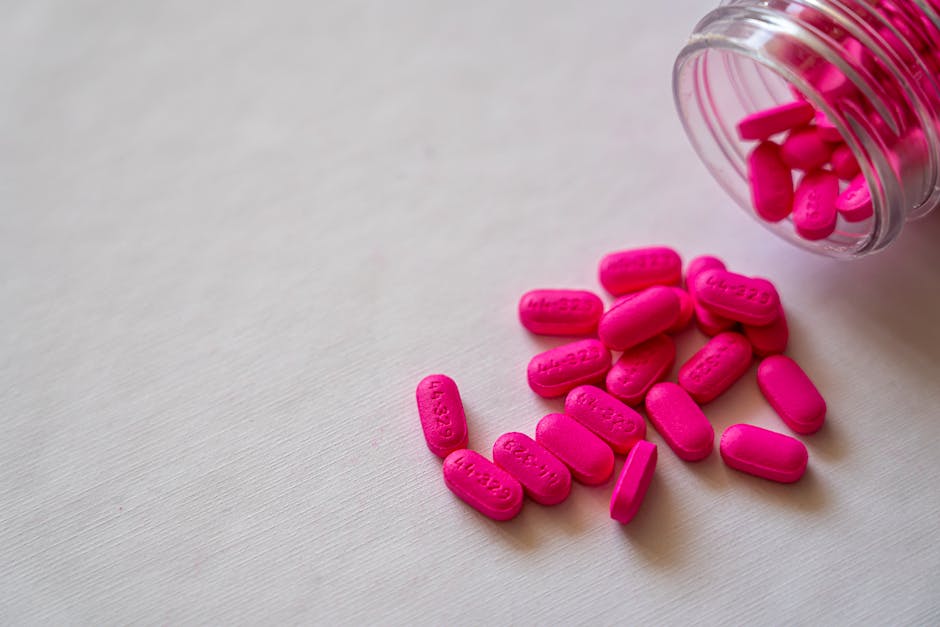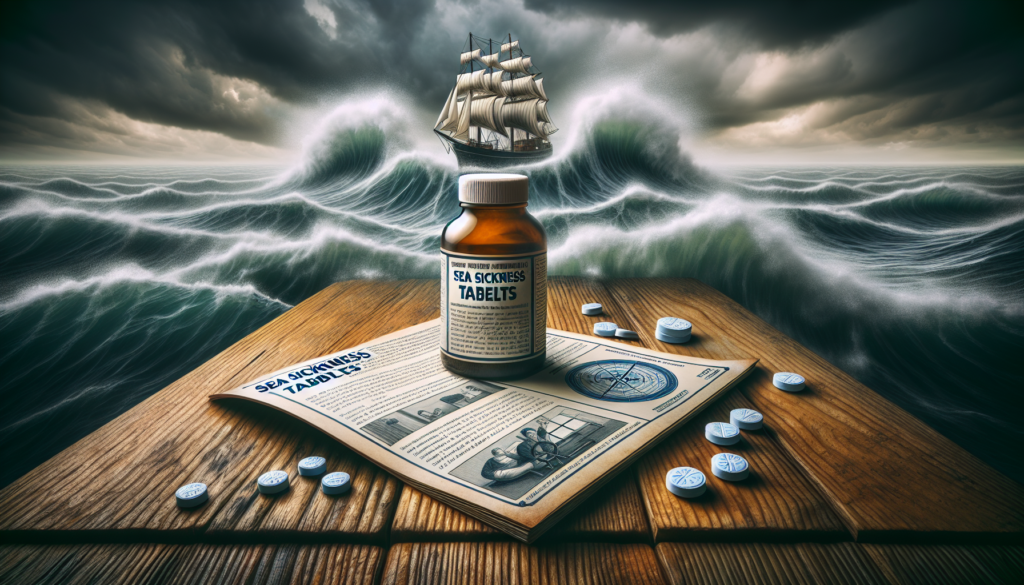Exploring the Depths of Sea Sickness Tablets: An In-Depth Guide
Have you ever dreamt of setting sail on the open seas, only to have your adventure marred by the unpleasant effects of sea sickness? The feeling of nausea, dizziness, and malaise can quickly turn a promising voyage into a nightmare. Fortunately, modern medicine offers a solution in the form of sea sickness tablets. These tiny pills pack a powerful punch, providing relief for those who struggle with motion sickness on boats, ships, and other watercraft. In this comprehensive guide, we will dive deep into the world of sea sickness tablets, exploring their history, mechanisms of action, effectiveness, and much more. So, grab a life vest and join us on this journey through the seas of pharmaceutical innovation!
The Evolution of Sea Sickness Tablets
Sea sickness has plagued sailors and seafarers for centuries, with historical records dating back to ancient times. The term “mal de mer” or “seasickness” was first coined in the 18th century, describing the debilitating symptoms experienced by individuals on the water. In the past, remedies for sea sickness ranged from herbal concoctions to elaborate rituals, with varying degrees of success.
It wasn’t until the 19th and 20th centuries that the first sea sickness tablets were developed. These early formulations typically contained ingredients like ginger, peppermint, and scopolamine, all known for their anti-nausea properties. Over time, pharmaceutical companies refined these formulations, creating more potent and effective sea sickness tablets that are widely used today.
The Science Behind Sea Sickness Tablets
Sea sickness tablets work by targeting the vestibular system, a complex network of organs in the inner ear that helps us maintain balance and spatial orientation. When we are on a moving vessel, such as a boat or ship, the motion disrupts the signals sent from the inner ear to the brain, leading to the symptoms of sea sickness. Sea sickness tablets contain active ingredients that help stabilize these signals, reducing the mismatch between what the inner ear perceives and what the eyes see.
One of the most common ingredients in sea sickness tablets is dimenhydrinate, a type of antihistamine that acts on the brain to alleviate nausea and vomiting. Another popular ingredient is meclizine, which works by blocking the action of certain neurotransmitters in the brain that are associated with motion sickness. These medications are typically available over the counter and come in various forms, such as tablets, chewable tablets, and patches.
Effectiveness and Safety of Sea Sickness Tablets
Sea sickness tablets are generally regarded as safe and effective for the majority of individuals. However, like any medication, they may cause side effects in some people. Common side effects of sea sickness tablets include drowsiness, dry mouth, blurred vision, and constipation. It is important to read the package insert carefully and follow the recommended dosage instructions to minimize the risk of side effects.
For individuals with chronic health conditions or those taking other medications, it is advisable to consult a healthcare provider before using sea sickness tablets. Certain medical conditions, such as glaucoma, urinary retention, and asthma, may be contraindications for the use of specific sea sickness medications. In addition, pregnant women and breastfeeding mothers should exercise caution when using sea sickness tablets, as some ingredients may pose risks to the developing fetus or infant.
Types of Sea Sickness Tablets
There are several types of sea sickness tablets available on the market, each with its own unique formulation and mechanism of action. Some popular brands include:

1. Dramamine: One of the most well-known sea sickness tablets, Dramamine contains dimenhydrinate as its active ingredient. It is available in both regular and non-drowsy formulas, making it suitable for individuals who need to stay alert while on the water.
2. Bonine: Bonine contains meclizine as its active ingredient and is often recommended for individuals prone to motion sickness. It is known for its long-lasting effects and minimal side effects compared to other sea sickness tablets.
3. Scopolamine patches: Unlike traditional tablets, scopolamine patches are applied behind the ear and deliver a steady dose of medication over several days. These patches are preferred by some individuals who have difficulty swallowing pills or experience gastrointestinal side effects with oral medications.
Expert Opinions on Sea Sickness Tablets
We reached out to Dr. Emily White, a renowned marine biologist and expert in motion sickness, for her insights on sea sickness tablets. According to Dr. White, “Sea sickness tablets have revolutionized the way we approach motion sickness on boats. They provide a quick and effective solution for individuals who struggle with nausea and dizziness while at sea. As a marine biologist, I often recommend sea sickness tablets to my colleagues and research assistants before embarking on field expeditions.”
Dr. White also emphasized the importance of proper dosage and timing when using sea sickness tablets. “It’s crucial to take the medication at least 30 minutes before boarding the vessel to allow it to be absorbed into the bloodstream. Additionally, following the recommended dosage instructions is essential to avoid any adverse effects.”
Common Misconceptions About Sea Sickness Tablets
Despite their widespread use, sea sickness tablets are not without their misconceptions. One common myth is that sea sickness tablets are only effective for short journeys or mild symptoms. In reality, sea sickness tablets can be used for long voyages and severe symptoms, providing relief for individuals in various situations.
Another misconception is that sea sickness tablets are only for boats and ships. While they are commonly used in maritime settings, sea sickness tablets can also be effective for other forms of transportation, such as airplanes, cars, and trains. The anti-nausea properties of these medications make them versatile options for individuals prone to motion sickness in any setting.
Comparative Analysis of Sea Sickness Tablets
When comparing different sea sickness tablets, it is important to consider factors such as active ingredients, dosage forms, onset of action, duration of effect, and side effects. Dramamine and Bonine are two of the most popular options on the market, each with its own strengths and limitations.
Dramamine is known for its fast-acting formula and availability in multiple formulations, including chewable tablets and liquid gels. It is a versatile option for individuals who need immediate relief from sea sickness symptoms. On the other hand, Bonine is preferred for its long-lasting effects and minimal side effects, making it a suitable choice for individuals with sensitive stomachs or those prone to drowsiness.
Frequently Asked Questions About Sea Sickness Tablets
1. Can I take sea sickness tablets with other medications?
It is important to consult a healthcare provider before taking sea sickness tablets with other medications, as certain drug interactions may occur. Some medications, such as sedatives and tranquilizers, may potentiate the effects of sea sickness tablets, leading to increased drowsiness and other side effects.
2. Are sea sickness tablets safe for children?
Sea sickness tablets are generally safe for children over a certain age, as determined by the manufacturer’s guidelines. It is recommended to use pediatric formulations of sea sickness tablets for children to ensure proper dosing and minimize the risk of side effects.
To Wrap Things Up
In conclusion, sea sickness tablets are a valuable tool for individuals who struggle with motion sickness while on the water. These medications offer fast and effective relief from nausea, dizziness, and other symptoms associated with sea sickness. By understanding the science behind sea sickness tablets, exploring different types and brands, and consulting with healthcare providers as needed, individuals can enjoy their maritime adventures with greater comfort and peace of mind. So, the next time you set sail, be sure to pack a few sea sickness tablets in your travel kit and prepare for smooth sailing ahead!



